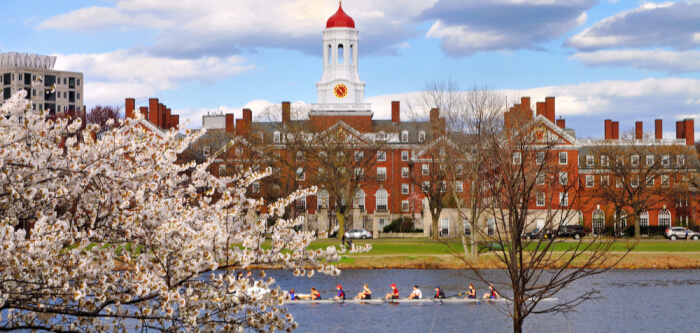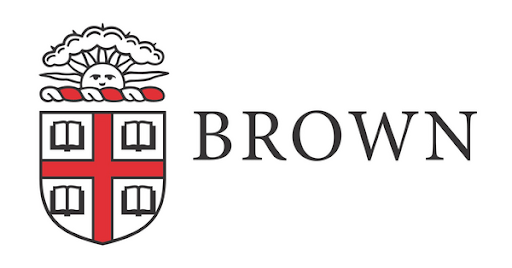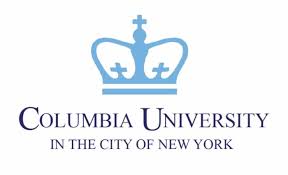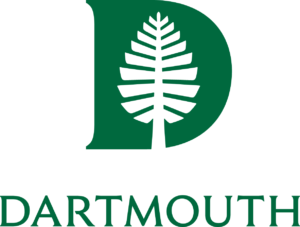
Expensive and competitive are the two words that most likely come to mind when you ponder an Ivy League education. The hard truth is that the vast majority of prospective college students never even consider these elite schools because they simply don’t have the academic qualifications to be admitted or fear they can’t afford the steep tuition. Those who do contemplate applying to one of the Ivies face a difficult and potentially life-altering choice—to attend an Ivy League School or opt for one of the numerous other colleges and universities across the nation that are less exclusive, but that also offer high-quality postsecondary education. At the core of the issue is the lingering question: Is an Ivy League education worth it?
Related:
What Do I Need to Get Into An Ivy League School?
The Cost of An Ivy League Education

There’s no denying that an Ivy League education comes at a cost. The exact price will vary based on several different factors. One of these factors is which of the Ivy Leagues you attend. Below, we list the most current tuition numbers available for each of the eight Ivy League schools, according to the National Center for Education Statistics (NCES). Specifically, these figures represent the tuition costs for full-time undergraduate students for the 2019-2020 academic year:

- Brown University: $58,404
- Columbia University: $61,788
- Cornell University: $57,222
- Dartmouth College: $57,638
- Harvard University: $51,925
- Princeton University: $52,800
- University of Pennsylvania: $57,770
- Yale University: $55,500
Related:
5 Things You Didn’t Know About Ivy League Schools
What’s the Average?
Given the individual costs of attendance for each school, we can conclude that the average cost of an Ivy League education is approximately $56,600 per year. Still, the price each student pays will depend on the amount of financial aid they receive. Financial aid for any school can come in various forms, such as scholarships, grants, and loans. Though none of the Ivies offer merit-based scholarships, they are known for their generous need-based financial aid packages.
The Actual Cost of Attending an Ivy League School: Net Price
A school’s net price may provide a better indication of the actual cost of attendance. Net price is the price students pay after being awarded financial aid, so it’s usually much lower than the advertised tuition cost. Below, we list the net price of each of the Ivy League schools, according to the National Center for Education Statistics (NCES):

- Brown University: $27,218
- Columbia University: $21,828
- Cornell University: $28,921
- Dartmouth College: $23,869
- Harvard University: $18,030
- Princeton University: $18,712
- University of Pennsylvania: $24,771
- Yale University: $18,073
Another thing to keep in mind is the additional costs of an Ivy League education, such as university fees, textbooks, and room and board. These additional expenses can increase the cost of attending one of the Ivies by up to tens of thousands of dollars above tuition costs.
The ROI of Attending an Ivy League School
At the most practical level, college is an investment. Thus, it’s important to consider your ROI—or return on investment—when applying to an Ivy League school, or any school for that matter! The ROI of any investment is the yield of that investment minus its cost. Therefore, to calculate the ROI of Ivy League attendance, you’ll need to weigh the cost of attendance against your salary potential. To help you estimate the ROI of an Ivy League education, we’ve listed the approximate 20-year net ROI of a bachelor’s degree from each of the eight Ivies, according to PayScale.com:

- Brown University: $672,000
- Columbia University: $741,000
- Cornell University: $701,000
- Dartmouth College: $668,000
- Harvard University: $821,000
- Princeton University: $879,000
- University of Pennsylvania: $774,000
- Yale University: $749,000
Interestingly, none of the Ivies made PayScale’s top 10 best value colleges based on these figures, but Princeton and Harvard did make the top 20.
Related:
Investopedia: Is An Ivy League Degree Worthwhile?
The Other Benefits of Attending an Ivy League School
Clearly, attending a college of any kind is a financially-motivated decision for many students. However, there are numerous other reasons a prospective student may choose to attend one college over another. This section will discuss the other non-financial reasons one may choose to attend an Ivy League school.
Community

You may be surprised to learn that for some students, the real value of attending an Ivy League institution is not the school itself, per se. Instead, the best perks come from being immersed in a community of scholars committed to learning at the highest level. It sounds cliché, but the Ivies really do attract the best and brightest students across the nation (and beyond!). These schools are highly selective and only admit those applicants with the highest grade point averages and college entrance exam scores. This means that their classrooms are filled with some of the most intelligent young minds in existence. Students tend to feed off one another’s ideas as they engage in collaborative group projects and lively debates and discussions. This in itself is worth the price of an Ivy League education, according to some alumni.
Resources

Besides being instructed by distinguished professors and surrounded by high-achieving peers, students enrolled in one of the eight Ivy League schools have access to unparalleled academic resources. These resources include state-of-the-art research laboratories outfitted with first-class equipment and tools, extensive academic libraries featuring rare books that can be found nowhere else in the world, and world-renowned museums and galleries located right on campus. For many students, these exclusive resources are what provide the real value of an Ivy League education.
Reputation

A degree is a degree is a degree, right? Not so fast! Where you go to school matters, and if you’re one of the fortunate students accepted to an Ivy League school, it matters even more. A resume boasting an Ivy League education is one of the few things guaranteed to impress a potential employer right out of the gate. Is this name recognition warranted, though? That is, are the schools labeled “Ivy League” as impressive as their reputations suggest? Evidence indicates that they are, indeed. Below is a list of the top 10 national universities, according to U.S. News & World Report’s 2021 rankings:
- Princeton University
- Harvard University
- Columbia University
- Massachusetts Institute of Technology
- Yale University
- Stanford University
- University of Chicago
- University of Pennsylvania
- California Institute of Technology
- Johns Hopkins University
Note that Ivy League schools take the first three spots in this prestigious ranking and positions five and eight. Thus, half of the U.S. News & World Report’s top national universities are Ivies. This realization confirms the quality of these Ivy League schools, but it also raises questions about the other non-Ivy schools in the ranking. Are these schools equally reputable? In short, no. While they may deliver comparable educational value, they do not hold the weight of an Ivy League school, at least in terms of name recognition. That doesn’t mean that employers won’t be impressed by an applicant with a credential from Stanford; it just means they might not be as blown away as they would by a prospective employee from Harvard or Yale.
Related:
Things You Probably Didn’t Know About Ivy League Schools
Inside the Ivy League: A Glimpse into the Schools Themselves
So far, we’ve discussed the Ivy League schools collectively. In reality, though, each of the eight Ivies is unique. In this section, we’ll provide a brief overview of the schools themselves, highlighting any distinguishing characteristics that set them apart from the others.
Brown University

Located in Providence, Rhode Island, Brown University was first established in 1764. Today, it is one of the nation’s top research universities and is well-known for its unique, student-driven approach to education. Its 7,000+ undergraduate students subscribe to the school’s “open curriculum,” meaning they prescribe their own courses rather than following a pre-determined academic plan. As a result, these students become more intellectually-stimulated, solution-oriented, and entrepreneurial-minded, according to school officials. Though the open curriculum is highly flexible, there are a few requirements. For example, students must select a concentration comparable to a major, and they must take certain English and composition courses.
Another characteristic of Brown that sets it apart from the other Ivies is its flexible grading policies. The school enables students to take classes on a “pass/fail” basis rather than for a grade. This policy prioritizes learning over scores and encourages students to take classes that may be out of their academic comfort zones, so to speak.
Facts About Brown University
- Student-to-Faculty Ratio: 6 to 1
- Undergraduate Tuition: $58,404
- Acceptance Rate: 7%
Unique Value Proposition: Brown University’s open curriculum puts undergraduate students in charge of their own education. Its flexible grading system also gives students more academic and intellectual freedom.
Columbia University

Located in New York, New York, Columbia University is one of the oldest and most respected post-secondary academic institutions in the United States. Known for its excellent undergraduate programs in engineering and computer science, the school is also an active research hub that welcomes a diverse student body and faculty. In sharp contrast to some of the other Ivy League schools (most notably, Brown), Columbia University relies on a prescribed core curriculum as the basis for its undergraduate program. Regardless of major, all students accepted to the university must take a common set of classes. These classes are rooted in the liberal arts and emphasize oral and written expression.
Apart from academics, Columbia University is home to an active student body with myriad opportunities to get involved and make a difference. In keeping with its mission to foster civic responsibility, the school hosts student organizations and service-learning initiatives designed to inspire and lead students to give back to their communities and make the world a better place.
Facts About Columbia University
- Student to Faculty Ratio: 6 to 1
- Undergraduate Tuition: $61,788
- Acceptance Rate: 5%
Unique Value Proposition: Undergraduate students enrolled at Columbia University receive a robust liberal arts education and enjoy active student life. The school’s location in the heart of New York City provides residential students with a truly unique and vibrant college experience.
Cornell University

Cornell University is not only one of the nation’s prestigious Ivy League schools, but also the state of New York’s land-grant institution. As such, the school is committed to enriching the lives of its students and contributing to the common good of its community, its state, and the world. Founded in 1865, the university is currently home to more than 15,000 undergraduate students. Though its founding mission is to provide quality education in all academic disciplines, the university is best known for its standout business programs and its undergraduate offerings in engineering and computer science.
Facts About Cornell University
- Student to Faculty Ratio: 9 to 1
- Undergraduate Tuition: $57,222
- Acceptance Rate: 11%
Unique Value Proposition: Cornell University’s undergraduate students aren’t just college kids; they’re activists, volunteers, and emerging leaders. Part of this school’s distinct appeal is that students are respected as important members of the college community (and beyond), even before they graduate with an elite degree.
Dartmouth College

As the smallest of the Ivy League schools, Dartmouth College enrolls just under 4,500 undergraduate students per year. Founded in 1769, the school is home to undergraduate schools of engineering, arts, and sciences as well as graduate programs in business, medicine, and engineering. Despite its impressive academic offerings, the school manages to maintain a quaint and intimate feel. The student to faculty ratio is just 7 to 1, meaning students have the potential to receive a fair amount of individualized instruction and one-on-one mentoring from professors.
Facts About Dartmouth College
- Student to Faculty Ratio: 7 to 1
- Undergraduate Tuition: $57,638
- Acceptance Rate: 8%
Unique Value Proposition: Dartmouth College’s location in scenic Hanover, New Hampshire, draws students who enjoy the great outdoors. Still, the school’s academic focus is comparable to that of the other Ivies, with a particular emphasis on undergraduate education.
School Profile
Harvard University

Harvard is the oldest of the Ivy League schools and the oldest of any college or university in the United States. Founded in 1636, Harvard University has provided a world-class education to its students for nearly 385 years. One of the larger Ivies, Harvard enrolls over 30,000 undergraduate and graduate students annually. Its large faculty enables the school to maintain a low student to faculty ratio of just 7 to 1. Perhaps because it has been around for so long, Harvard has the most name recognition of any of the Ivies, which is a big draw for many students. Having a degree of any kind from Harvard will open many doors of opportunity that may have been shut otherwise.
Facts About Harvard University
- Student to Faculty Ratio: 7 to 1
- Undergraduate Tuition: $51,925
- Acceptance Rate: 5%
Unique Value Proposition: All of the Ivy League schools are prestigious in their own right, but Harvard takes this prestige to another level. Having a degree from Harvard is like holding a golden ticket to a future filled with boundless opportunities.
Princeton University

Though it’s a well-known research university, Princeton is devoted to undergraduate teaching as well, which for many students, is what makes it stand out amongst the other Ivies. To put this into perspective, a freshman or sophomore at Princeton is more likely to be taught by an actual professor rather than a teaching assistant than they would be at Cornell, for instance. That’s because, at Cornell and many other top-tier research universities, faculty members are often too preoccupied with conducting their own research or teaching graduate classes to be bothered with a lower level undergraduate class.
Facts About Princeton University
- Student to Faculty Ratio: 5 to 1
- Undergraduate Tuition: $52,800
- Acceptance Rate: 6%
Unique Value Proposition: Like Harvard, Princeton holds a lot of name recognition. A degree from Princeton may hold slightly more weight than some of the lesser-known Ivies.
University of Pennsylvania

Founded by Benjamin Franklin in 1740, the University of Pennsylvania has a long history of academic excellence. Today, the school continues to be ranked among the leading institutions of higher education in the country. It’s not the school’s reputation that attracts them to its campus for many UPenn students, though. Instead, students who enroll at the university find unparalleled opportunities for extracurricular involvement, social activism, and service-learning. The strong sense of community at Penn translates to a tight-knit and active alumni network post-graduation. For many graduates, this influential network provides even more value than the degree itself and is worth the somewhat-pricey tuition many times over.
Facts About the University of Pennsylvania
- Student to Faculty Ratio: 6 to 1
- Undergraduate Tuition: $57,770
- Acceptance Rate: 8%
Unique Value Proposition: One of the larger Ivy League schools, the University of Pennsylvania is known for being resource-rich. Among its many impressive facilities are the Penn Museum of Archaeology and Anthropology, the Institute of Contemporary Art, and the Morris Arboretum.
Yale University

The third-oldest institution of higher learning in the United States, Yale University, is home to many of the same top-rated academic and professional programs that the other seven Ivies offer. In addition, though, Yale is well-known for its visual and performing arts programs. Another standout feature of this particular Ivy League school is its residential college network. Upon admission, all undergraduate schools are assigned to one of over a dozen residential colleges within the university system, granting them access to a tight-knit academic community within the bigger Yale experience.
Facts About Yale University
- Student to Faculty Ratio: 6 to 1
- Undergraduate Tuition: $55,500
- Acceptance Rate: 6%
Unique Value Proposition: Yale is arguably the most well-rounded of the Ivy League schools. Its flexible curriculum, undergraduate emphasis, active student life, and (of course) prestige factor make it a strong contender for the “best all-around” Ivy.
Frequently-Asked Questions About Attending an Ivy League School
If you’re thinking about attending an Ivy League school, then you are on the cusp of making a potentially life-changing decision. A degree from one of these prestigious higher learning institutions can open up many doors of opportunity that otherwise may have remained closed. On the other hand, enrolling in one of the Ivies is a huge commitment that can carry many different costs, such as monetary expenses and sacrifices of both time and effort. Therefore, the decision can be a difficult one. To help, our editors have compiled a list of some of the most frequently asked questions about these private universities and some general answers and information. It’s best to visit the school’s website or speak to an admissions counselor directly for specific details about a particular school.
Q: Are Ivy League schools expensive?
A: Yes and no. Although the official price tags of these prestigious schools are generally much steeper than some comparable colleges and universities, they also offer above-average financial aid opportunities, especially to high-achieving students who demonstrate financial need.
Q: Are Ivy League schools harder?
A: Part of the value of attending an Ivy League school is the academic rigor that these schools offer. The Ivies are designed for the brightest and the best students, and their mission is to challenge these young scholars with an innovative and intellectually stimulating curriculum. In this respect, Ivy League schools may be considered more difficult than many of the nation’s other colleges and universities.
Q: What Ivy League schools offer online degrees?
A: Though most Ivy League schools offer only online classes—not full degree programs—there are a few exceptions. For instance, Columbia University and the University of Pennsylvania have a limited number of degree programs that can be completed fully online. Dartmouth College offers two low-residency online graduate degree programs.
Q: What Ivy League schools have early action?
A: Harvard, Yale, and Princeton have early action plans. Students who elect early action can still apply to other schools during the regular admission cycle. The early action program enables applicants to receive an earlier admission decision from these Ivies while also considering other options.
Q: Which Ivy League schools have early decision?
A: The following Ivies offer early decision programs:
- Brown University
- Columbia University
- Cornell University
- Dartmouth University
- University of Pennsylvania
Unlike early action, early decision requires that applicants commit to attending the school upon receiving an admission decision.
Q: Which Ivy League schools are need blind?
A: All of the Ivies are need-blind for applicants who can prove U.S. citizenship. Need blind schools are those who consider all applicants despite their financial status. Each Ivy League school has a slightly different policy for international students, though, so it’s best to speak to an admissions counselor for details.
Q: Which Ivy League schools offer merit scholarships?
A: Interestingly, none of the Ivy League schools offer merit-based scholarships. However, students who demonstrate financial need often receive full need-based scholarships upon admission.
Sources:
Related Resources: